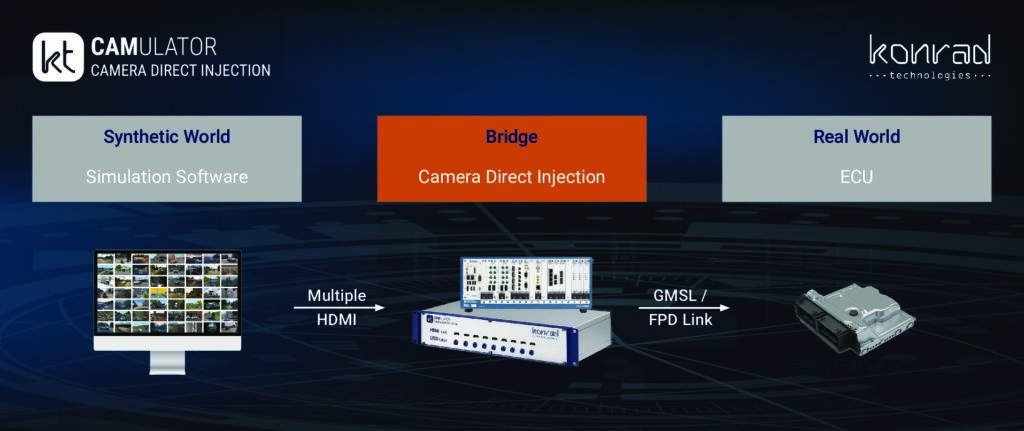Konrad Technologies has launched a camera-centric hardware-in-the-loop (HIL) system for autonomous driving (AD) solutions at this week’s ADAS & Autonomous Vehicle Technology Expo. The ‘KT-CAMulator’ camera direct injection solution serves as a data bridge from virtual simulators to an ECU while emulating the authentic behaviour of a camera. It enables electronic control units (ECUs) to sense a real-world camera connection, thereby pushing the boundaries of HIL testing. Leveraging the KT-CAMulator, test engineers can effectively validate a wide range of camera-based ADAS/AD systems, including lane keeping assistance (LKA), drowsiness detection and more, according to the company.
The PXIe-based KT-CAMulator is designed to emulate camera behavior and inject data into vision-based electronic control units. This advanced device solution exhibits an open interface that integrates into HIL testing architectures. The KT-CAMulator is a FPGA (Field Programmable Gate Array) driven system that excels in real-time data capturing, manipulation and generation, all with ultra-low latency.
Making camera direct injection boundless is its capability to integrate with various virtual simulation software, providing users with the flexibility to customize captured data and scale the system using a variety of interchangeable PXIe modules. KT-CAMulator is a futureproof HIL camera emulator, that will help meet the critical test coverage and development pace toward autonomous vehicles.
The company has been providing demonstrations of CAMulator, consisting of an HDMI injection and DUT out with land and objects detection, during the show. It also made a presentation at the ADAS & Autonomous Vehicle Expo Conference on June 15, titled, ‘ADAS Domain Controller Validation HILS Development‘, which was delivered by Jinjong Lee, head of ADAS system R&D at Konrad Technologies.


